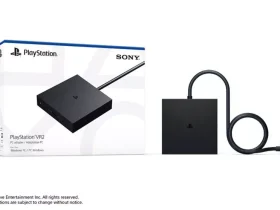It may feel like you can finally rest and move on after making a sale, but beware of what might come after.
A chargeback—when funds are returned to a customer after they’ve disputed a charge—is just one example of fraud that merchants in the e-commerce space might face.
While some customers may initiate a chargeback if they haven’t received the right product, others may intentionally do so to keep their purchase without having to pay for it.
Juniper Research projected that global losses due to e-commerce fraud would exceed $48 billion in 2023. A study by fraud detection company Kount found that its clients experienced a 2.3 percent loss in revenue due to chargebacks in 2021.
While not all chargebacks are deliberate cases of fraud—many are due to consumer confusion—there are several steps you can take to avoid and manage potential disputes.
The most important thing you need to successfully dispute a chargeback is a strong paper trail. For example, Thomas Phillips, co-founder of Delaware-based custom pet art business Pet Portraits, says his company keeps documentation of every step of a transaction with a customer.
This involves maintaining an email thread as they discuss art, share sketches, and provide delivery tracking information. Co-founder Olivia Tapper highlights that their most important tool for disputing chargebacks is a button customers must click to approve the art before it goes to the printer. This helps combat claims that customers were unsatisfied with the art.

Similarly, Katya Varbanova, CEO of London-based content creation development company Viral Marketing Stars, says it’s crucial to have software integrated into your payment processor that documents customer activity.
Varbanova, who offers courses, Canva templates, and coaching services, uses Kajabi, an online platform that manages digital courses and memberships.
She explains that its tools enable her to see when a user last logged in and how much of a course they’ve watched, providing evidence that a digital product has been used to dispute chargebacks.
Bryan Clayton, co-founder of Nashville-based lawn care service platform GreenPal, gathers timestamps, emails, and photos of completed work to dispute chargebacks.
Using Stripe as his payment processor, he notes the platform has improved in helping merchants handle chargebacks, reducing resolution times from 90 days to about 30.
Stripe also offers a Radar tool that uses machine learning to identify and block fraud, requiring more verification for customers deemed risky.
For companies billing services hourly, tools like Hubstaff can help. Marshal Davis, founder of Houston-based Ascendly Marketing, uses this time tracker to keep evidence of how long employees work on each project, which can be valuable in chargeback disputes. Beyond that, Davis emphasizes the importance of thorough communication with clients.
“Implement written agreements detailing every aspect of a transaction, like a website design project specifying revisions and timelines, and use detailed invoices for clarity,” he advises.
“This prevents misunderstandings and serves as vital evidence in dispute resolutions. Encourage digital acknowledgment of these agreements to protect both parties.”
One way to preemptively avoid chargebacks is by providing good customer service, says Tapper. Pet Portraits employs a client success manager to build customer rapport and handle concerns.
Tapper believes having a real person, rather than an AI chatbot, makes customers feel more connected to the business and more likely to discuss their dissatisfaction instead of initiating a chargeback.

Whenever possible, she and Phillips try to directly handle situations with customers to foster this connection. Clayton also employs a part-time staffer to collect and organize chargeback data into a spreadsheet.
Good customer service also involves creating transparent policies. Davis advises, “Establish a clear refund policy and train your team to handle complaints efficiently, prioritizing customer satisfaction while safeguarding your business.
Maintain thorough records of customer interactions, especially around refunds, to inform future strategies and reduce chargeback incidents.”
Varbanova stresses the importance of giving customers the benefit of the doubt rather than immediately suspecting fraud when seeing a chargeback.
Like Clayton, she finds many chargebacks occur because customers are confused about what the business is charging them for.
“I assume that most customers have good intentions, and if they wanted to charge back, it could have been that they weren’t clear that this was a sale from you [on their payment history].
So making sure that your website name appears on their bank statements so they can recognize what that is helps massively,” she says.
Since GreenPal connects local lawn services to customers on its platform, Clayton explains that customers can get confused when they see a charge from the service provider instead of GreenPal, leading to chargebacks. Clayton started informing clients that charges are co-branded with these companies to prevent this confusion.
Clayton, Davis, and Varbanova agree that if chargebacks are infrequent or if you run a small business, it might be more efficient to issue a full refund rather than invest time and resources in disputing a chargeback.
Davis notes that chargebacks can incur processing fees and potentially harm your business reputation. Clayton mentions that it was only recently that GreenPal saw a positive return on investment from hiring a part-time employee to manage chargebacks.
Initially brought on as an intern eight years ago, the employee’s efforts began yielding positive returns in the fourth year.
“If we invest in a better process and put somebody on this to check this once a week and work this spreadsheet, we literally make more money winning those chargebacks than we spend on dealing with them,” Clayton says. “But it didn’t start off that way.”






Leave a Reply